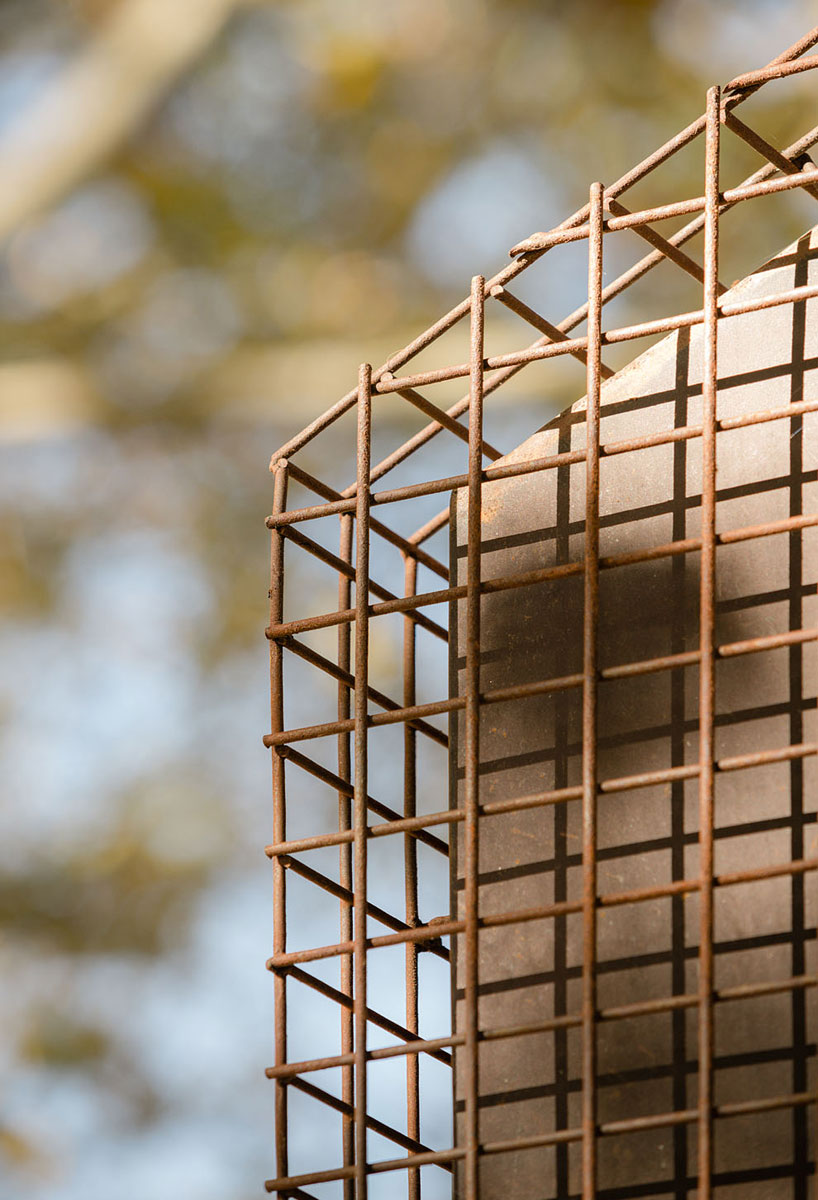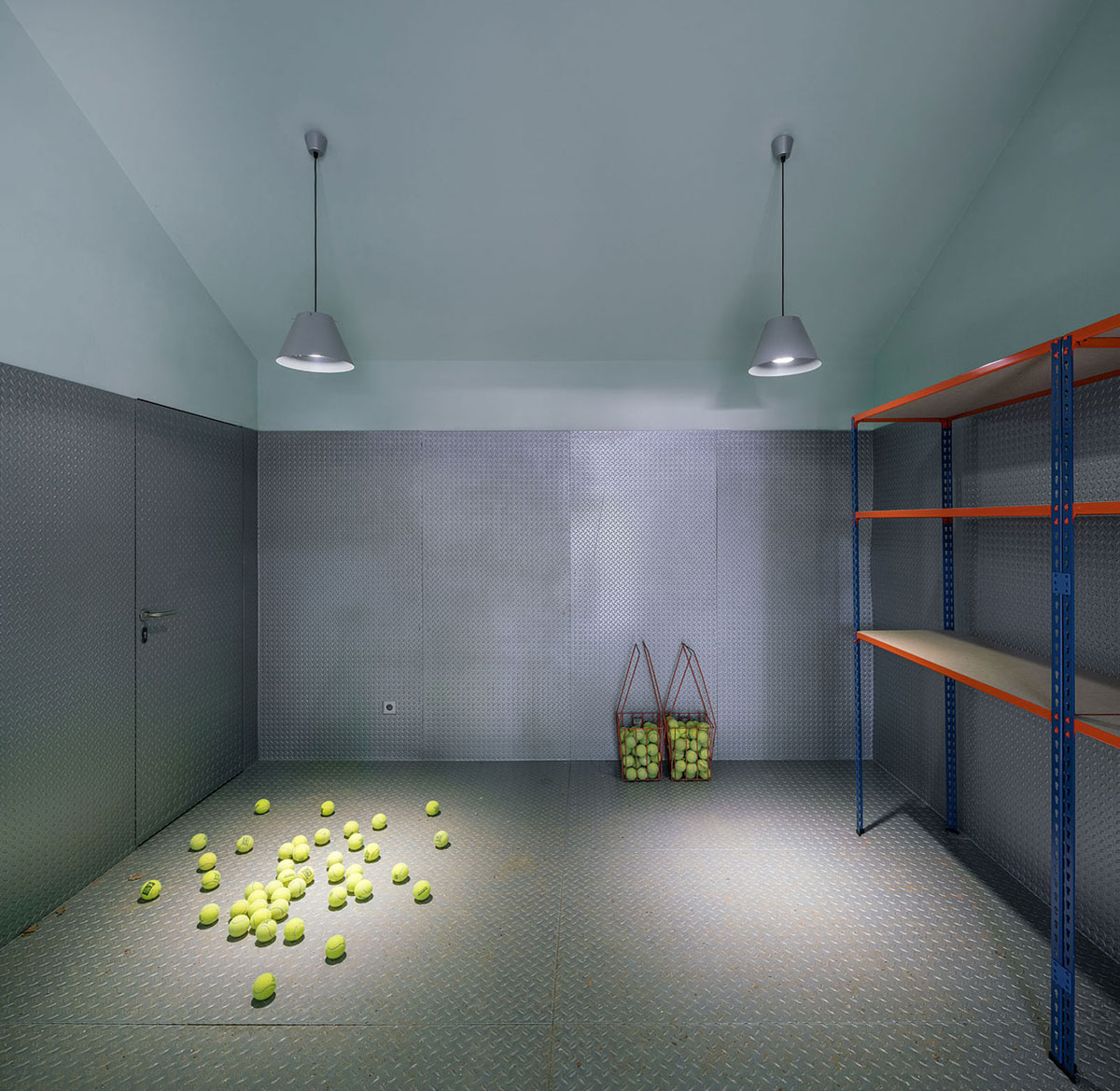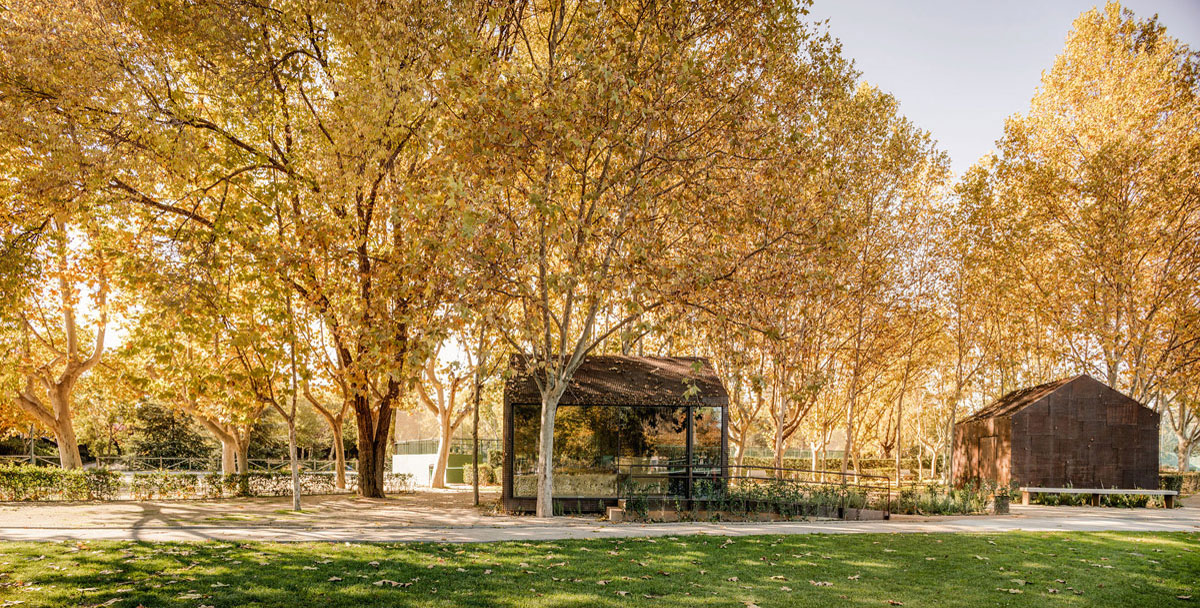
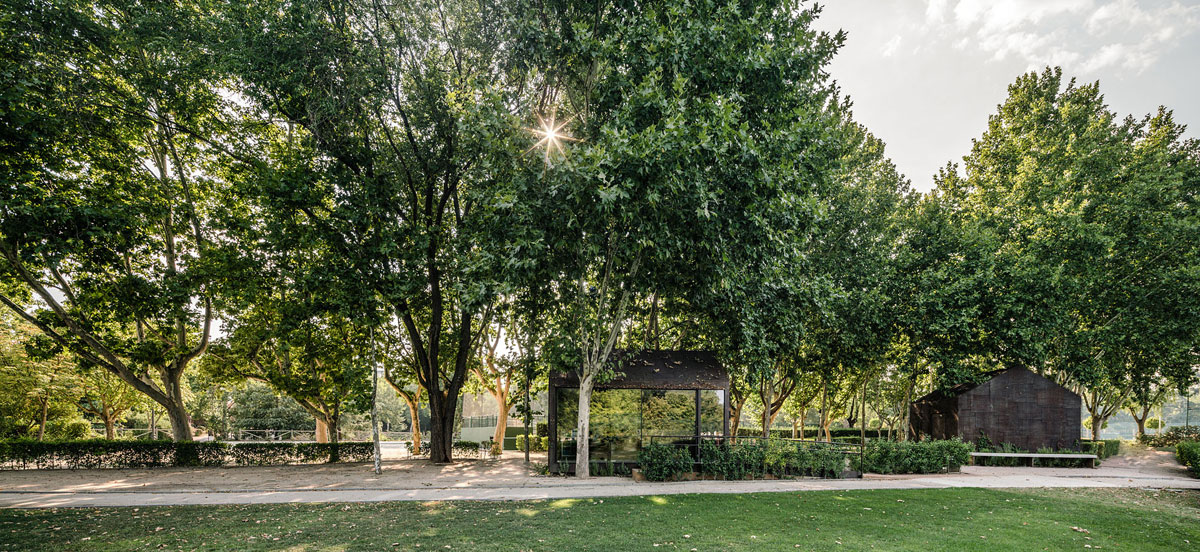
Dates: 2016
Location: Carretera de Castilla KM 2,5, Madrid, Spain.
Typology: Office building.
Client: Club de Campo Villa de Madrid, S.A.
Status: Completed
Size: 100 m2
Team: Borja Peña, Ernesto Sierra, Xabier Ortega, Sandra Rodríguez and David Parra.
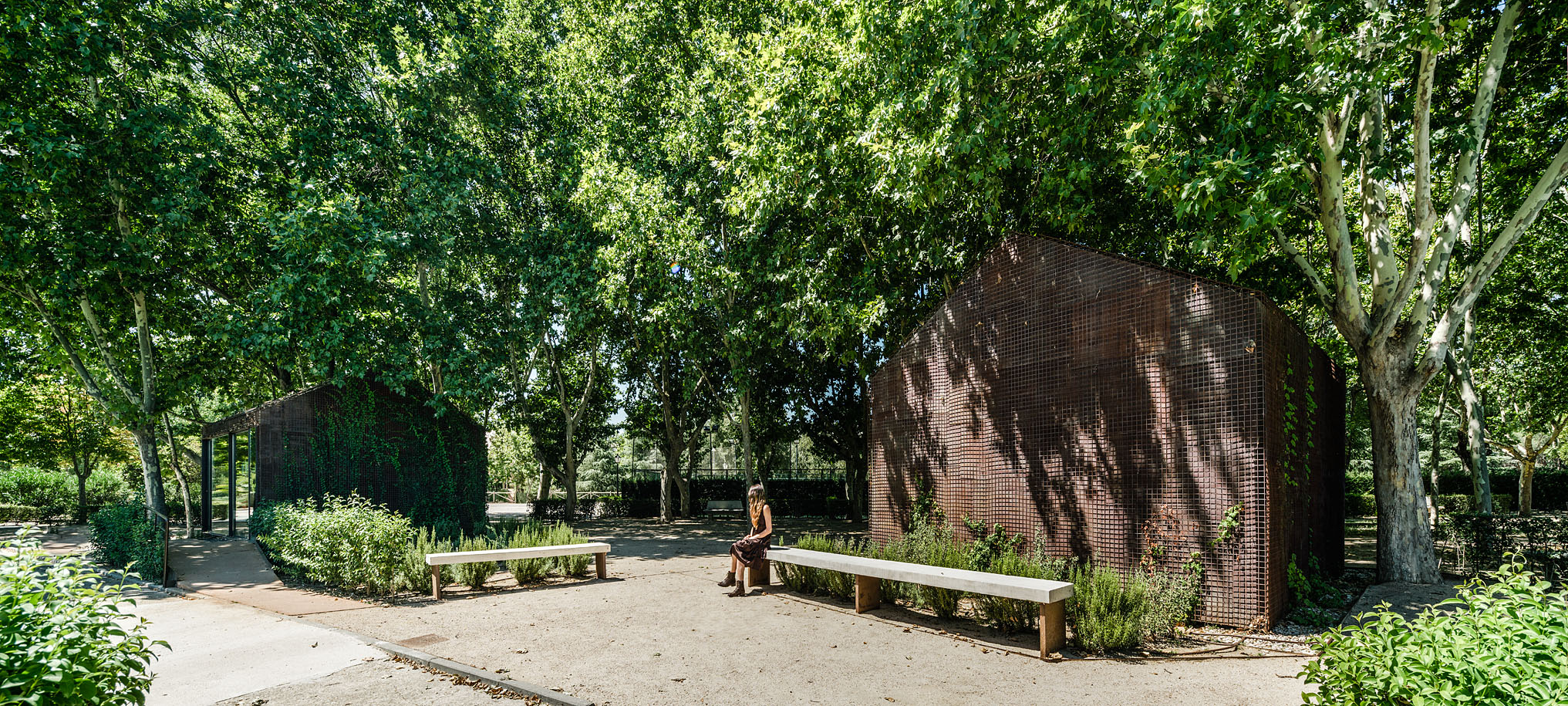
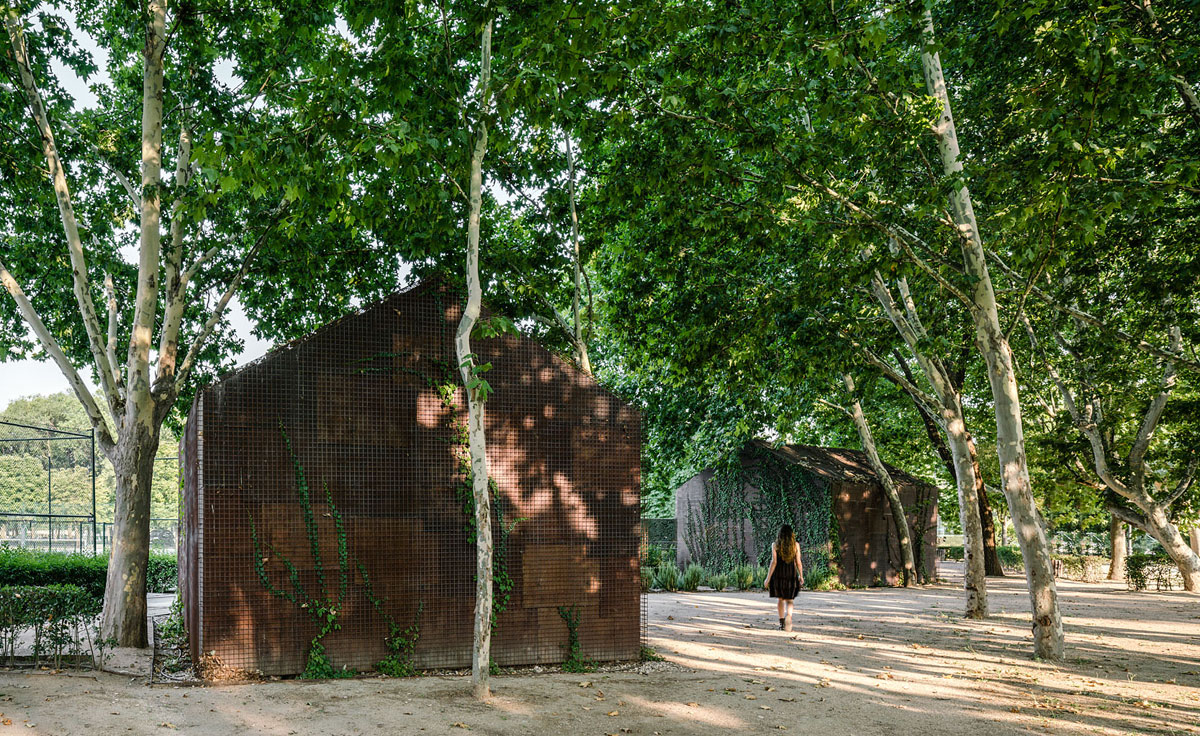
The project proposed the construction of a new office for the tennis and padel school in a sports grounds located in a privileged natural setting in Madrid.
The arrangement put forward, consisting of an office, a customer service area and a storage space for the equipment needed to give classes in the sporting disciplines, was resolved by paying special attention to the landscape and natural setting of the new building. So, after careful analysis of the grounds, locating each of the trees on the site, it was decided to break the functional programme up into two smaller parts, allowing easy integration of new building into the landscape and respecting the existing tree-lined area.
The simple geometry used to resolve these two small constructions sprang from the desire to recover “small architecture”, a look to the essence, something that means shelter to everyone. Two small buildings that, through discreet placement among the existing tree-lined area, easily resolve the functional programme and generate a new rest space between them.
Their outward appearance and formal rotundity, together with leisurely contemplation, carry the user’s imagination to the dream of a simple life, in harmony with nature, to the shelter of a solid structure that protects and caresses its occupants, breathing naturalism, balance and peace.
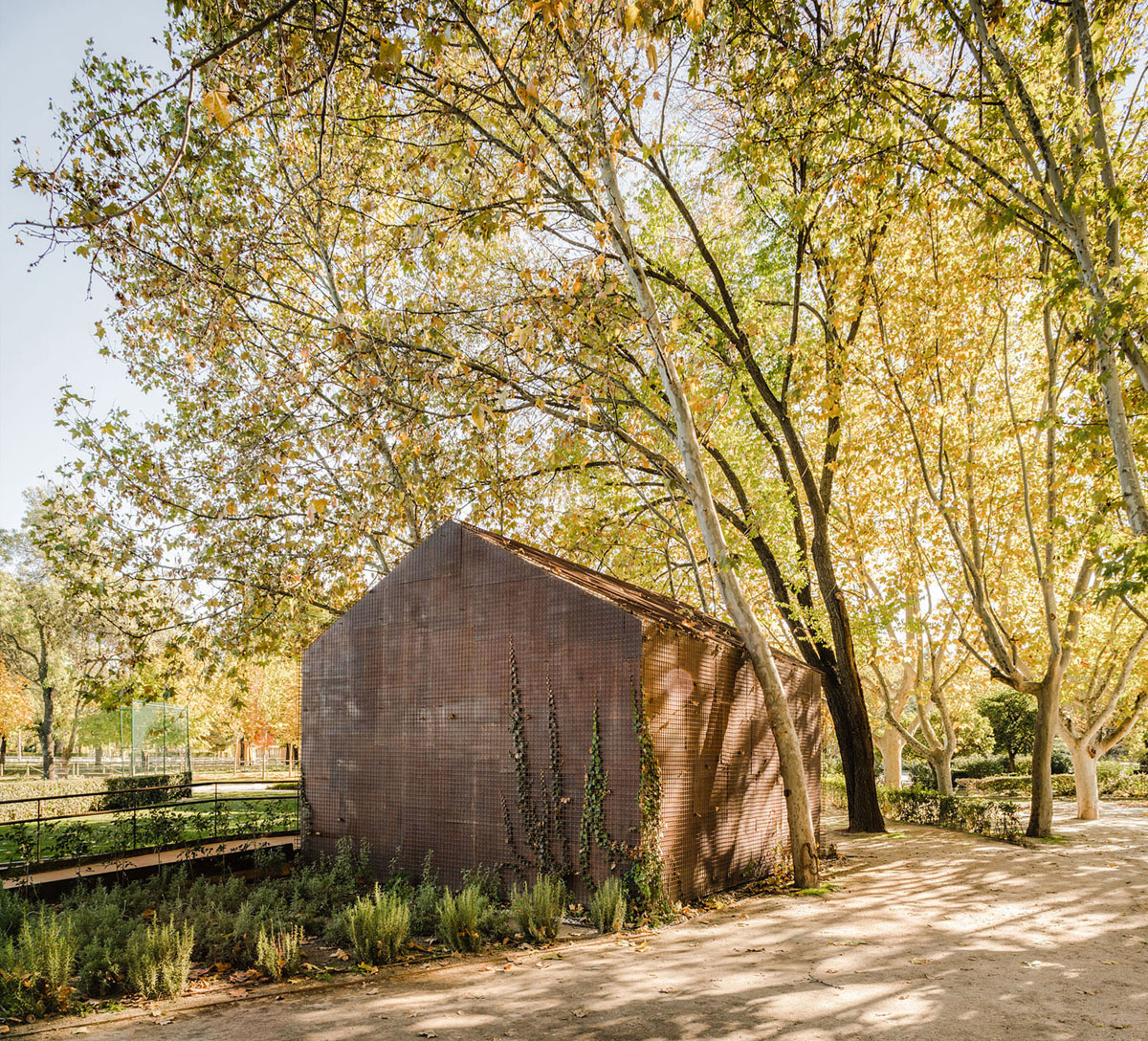
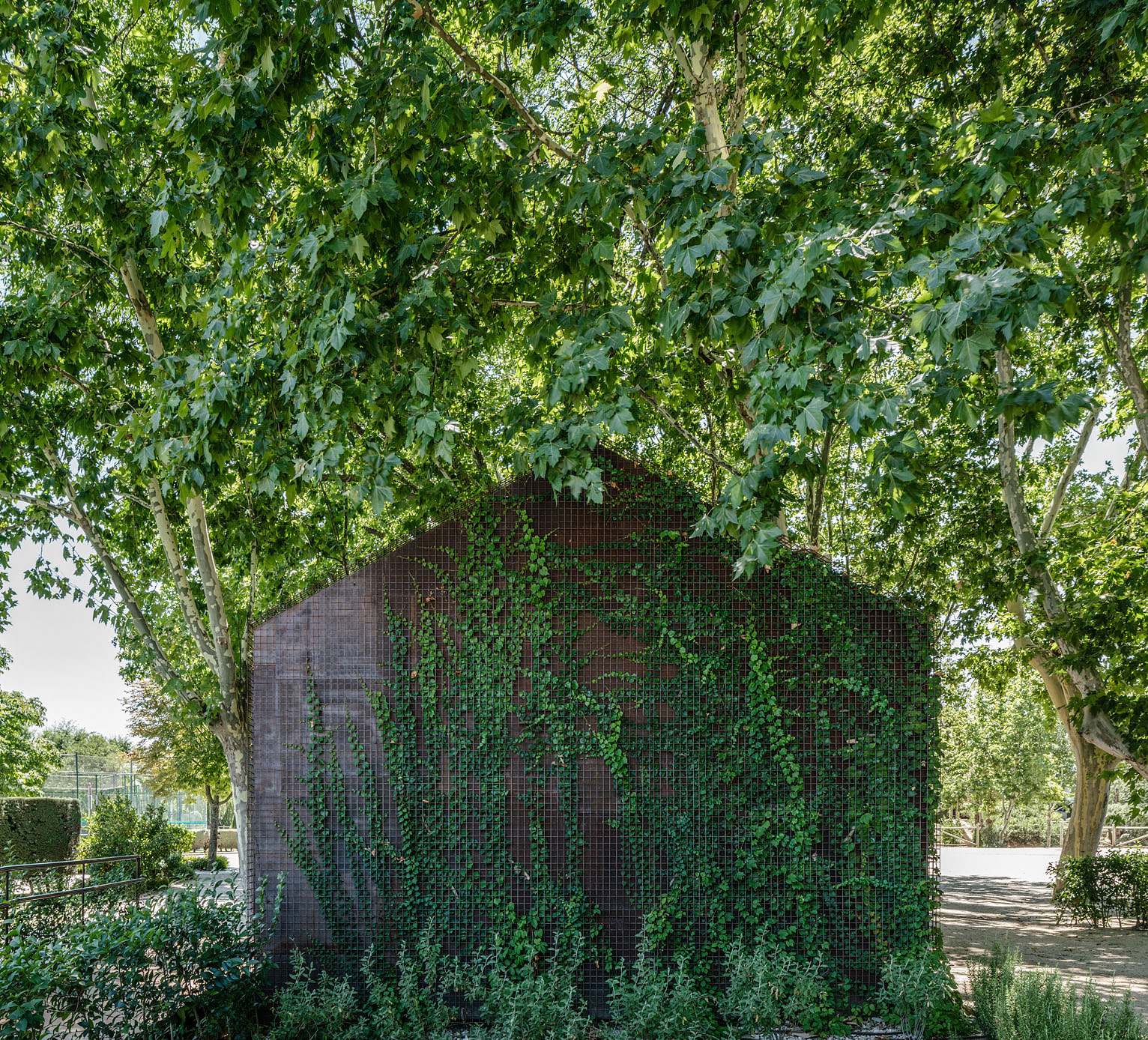

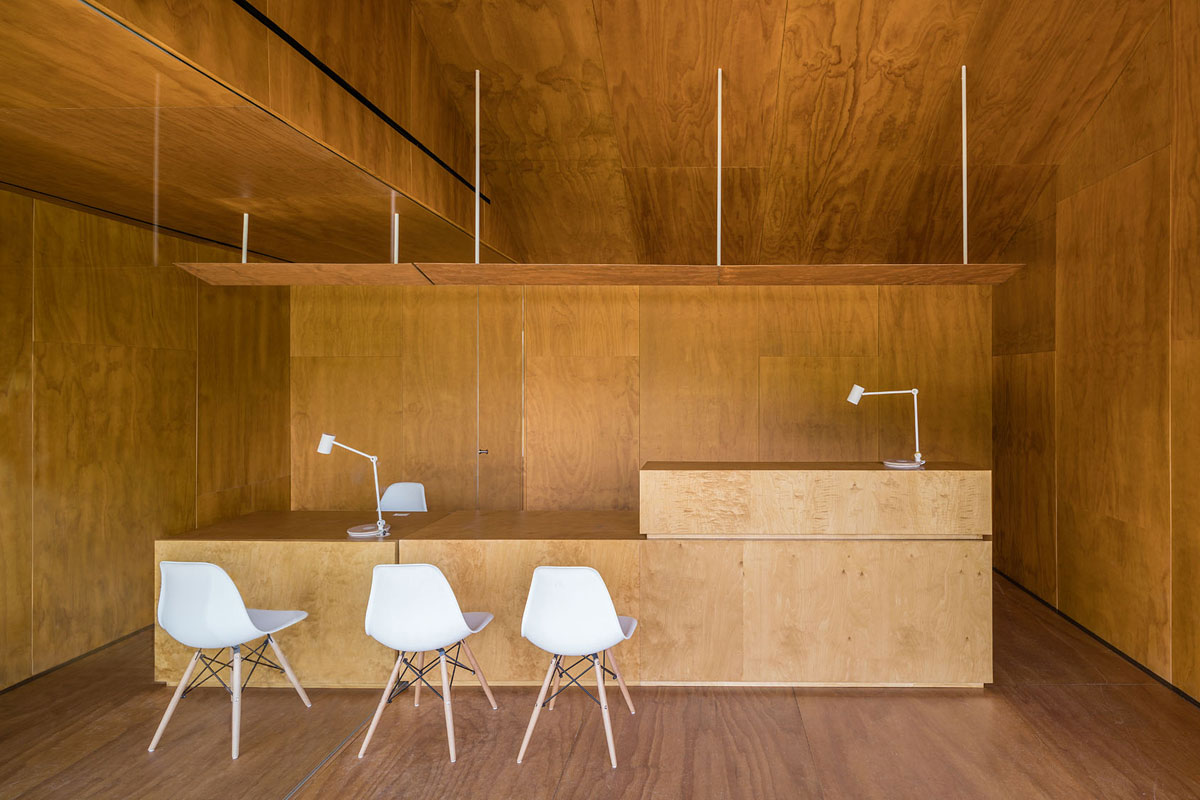

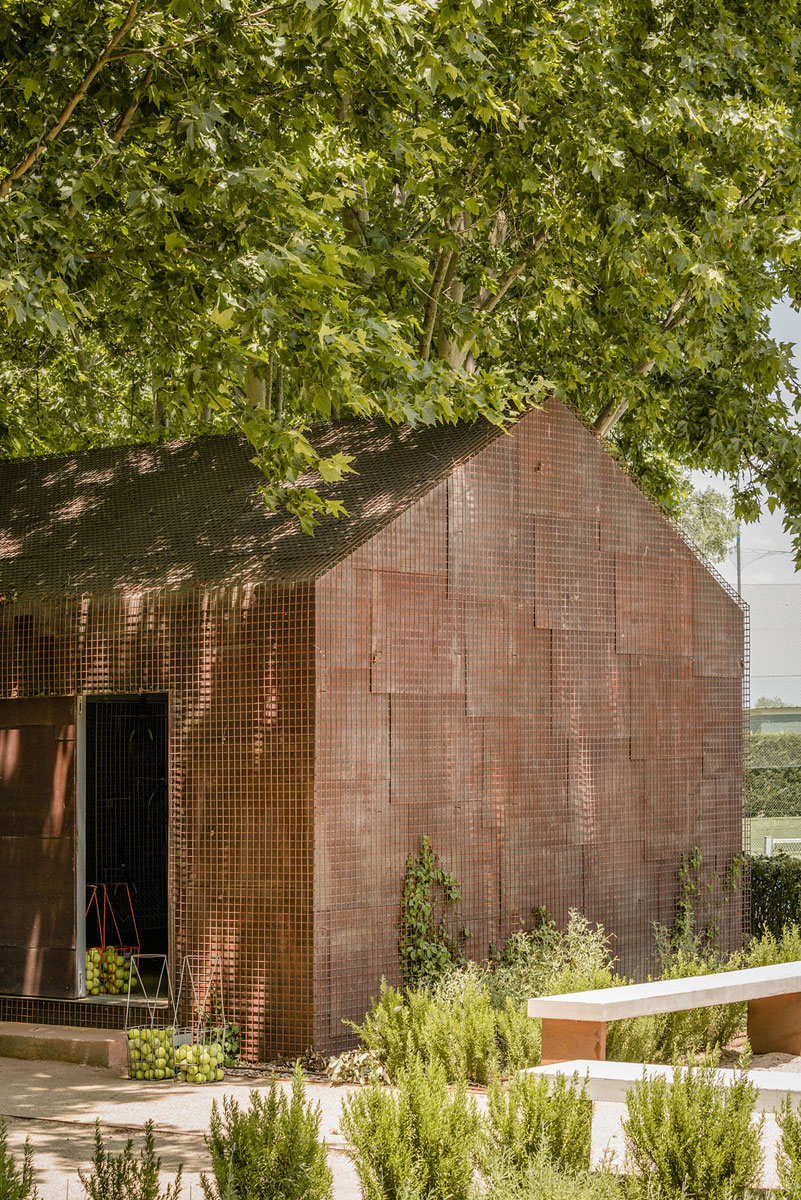
In construction terms, the two cabins were executed in the same way, by resolving them as items for industrialised construction, by means of a workshop-built steel structure, based on a single 5 m x 3 m module that could then be transported to site. The two buildings are supported on and separated from the existing land, with just a small concrete slab placed under the foot of each cabin as foundations. These respect the existing tree roots and give the assembly the necessary stability.
The continuous interior finishes facilitate spatial compression. The continuous interior lining of the floors, walls and ceiling is made of varnished pine plywood panelling in the case of the office and waterproofed plasterboard and embossed steel sheet in the storeroom.
The exterior is composed of phenolic panels and a skin of continuous scales in oxidised and varnished sheet steel with insulation between the two. A final exterior lining, in the form of a second skin made of an oxidised and varnished metal mesh, allows covering plants to grow over the whole volume of each construction, so achieving integration with and mimicry of the landscape setting that surrounds them throughout the different seasons.
The existing imposing deciduous trees integrated between the two buildings are used as an indispensable element of the project, providing each building with the necessary shading in the most sunlit months and allowing sunlight to penetrate to the inside in the coldest months. This simply and efficiently optimises the energy performance of the new buildings using the site’s pre-existing natural resources.


